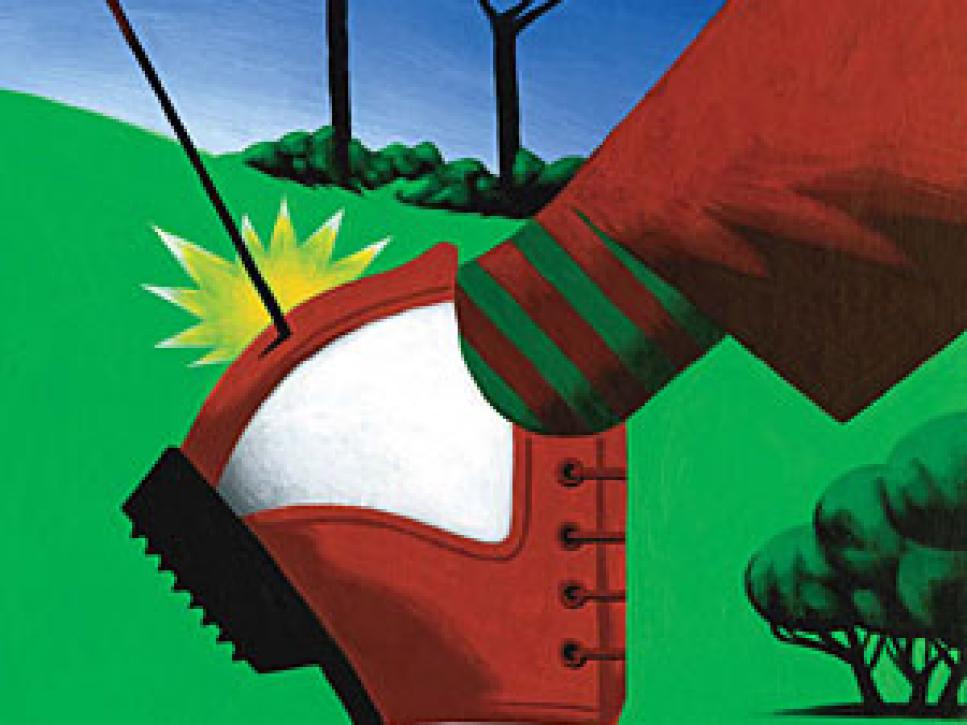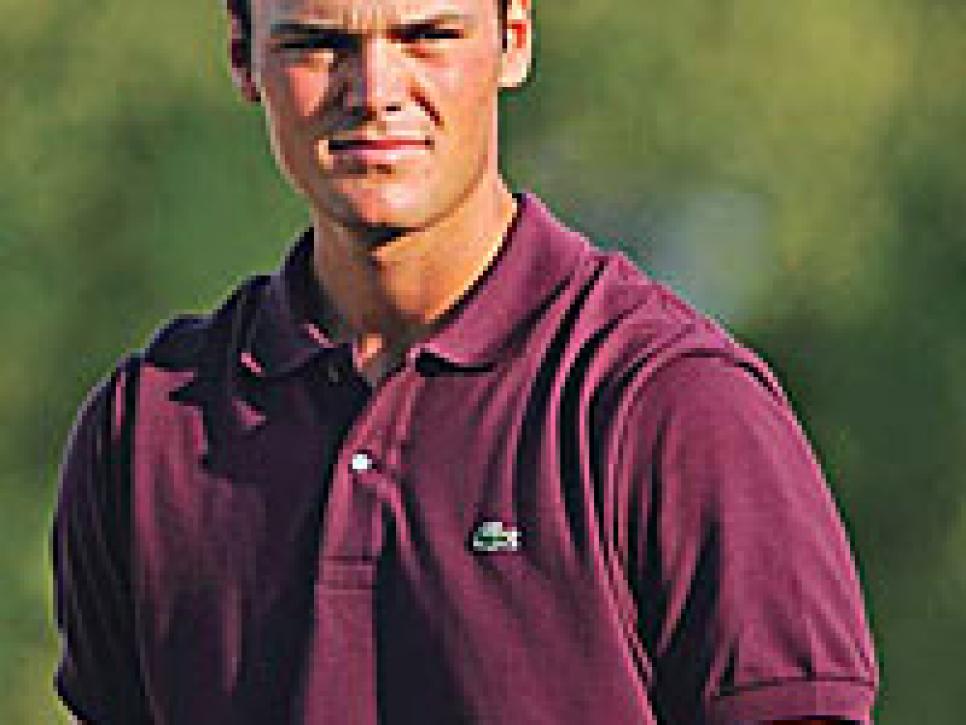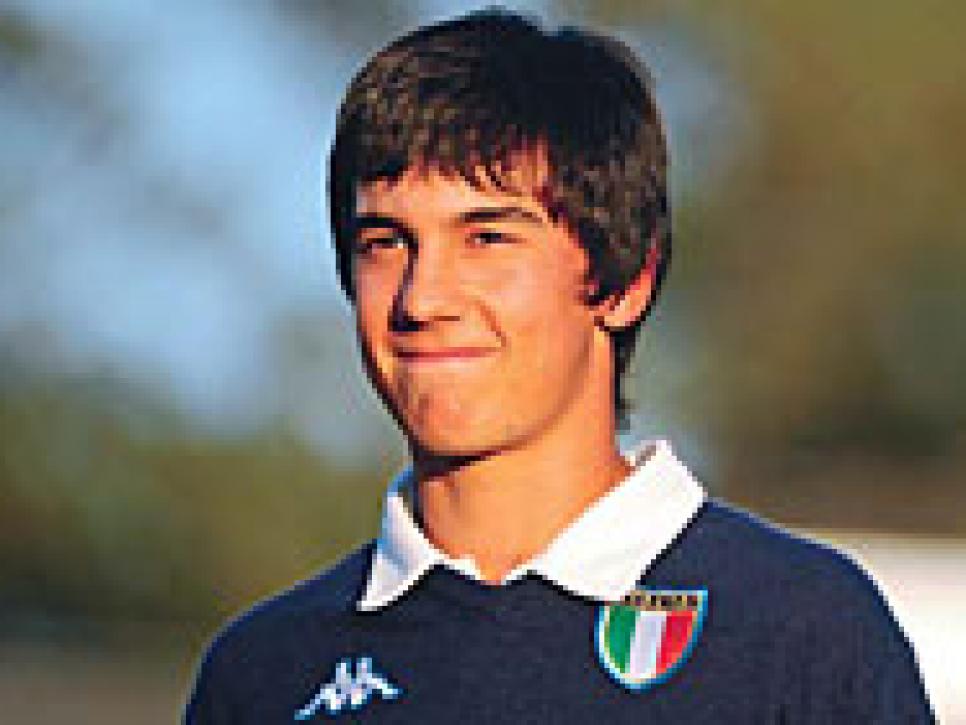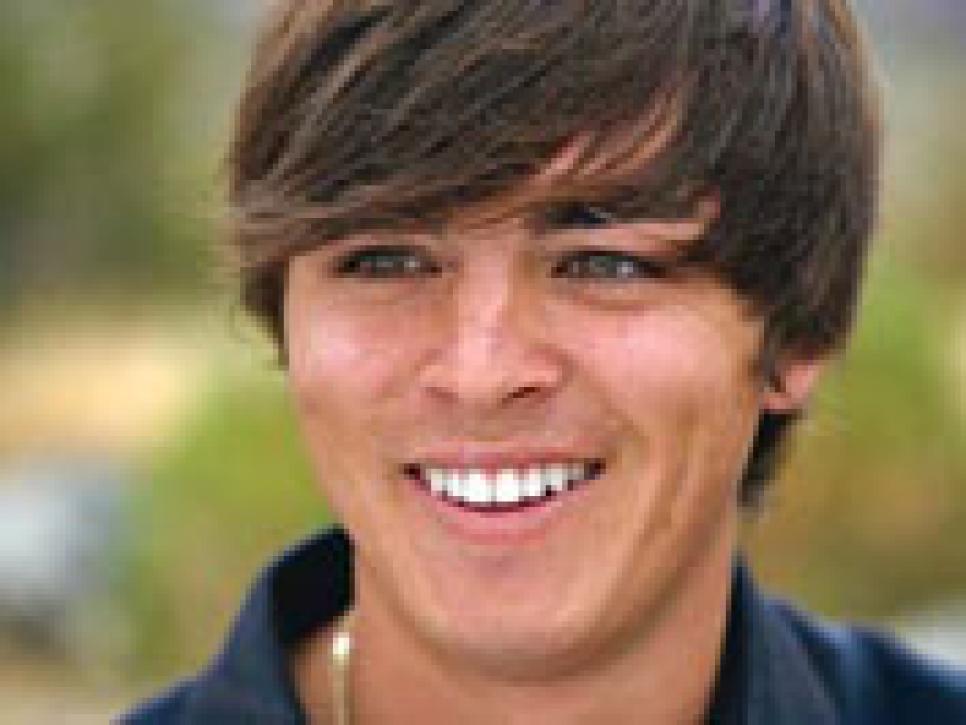Promises, Promises

The equation seems simple: Tiger Woods' Vulnerability
We heard it before the 2005 season, when Woods was also in a zero-for-10 drought in the majors. Sergio Garcia, Adam Scott, Justin Rose, Charles Howell III and others were hailed as those who would overtake him. They never unseated or unsettled Woods, and now those players are at least 30.
Many believe it will be different with the new class. The Woods they're challenging is older at 35, more worn physically and definitely unsettled, replaced at No. 1 by Lee Westwood
. They respect and emulate his game but don't fear him as their predecessors did.
Leading the charge is Martin Kaymer, who has a major victory and has been ranked as high as No. 3. Another 26-year-old, Dustin Johnson, led on the final day in two majors last year and has as much physical game as a young Woods.
But what gives the current group its distinction is its youth. The world has never seen the likes of Matteo Manassero, 17; Ryo Ishikawa, 19; and Rory McIlroy, 21, at the same time. Early success has been a good indicator of winning genius. It was certainly true of Jones, Nicklaus and especially Woods. But it's hardly foolproof, former phenom Ty Tryon being the latest cautionary tale.
But even if a true youth movement comes to fruition, it will still have to go some to become historic. At the start of 1976, Tom Watson, Johnny Miller
, Hubert Green, Ben Crenshaw, Jerry Pate and Lanny Wadkins were all under 30. In their 20s, they won a total of 70 PGA Tour events, including seven majors. By comparison, the winningest six among the current under-30s -- including Johnson, Camilo Villegas, Anthony Kim, Sean O'Hair, Hunter Mahan and J.B. Holmes -- have 18. (Kaymer, who has eight European tour wins, and Louis Oosthuizen, who has two, have the only majors among players in their 20s.)

the 2010 PGA Championship.
(Photo: J.D. Cuban)
"We keep hearing there are all these great young players, but none of them have won very often," says Miller, who had 18 victories in his 20s, matching Watson. "They look like they should be doing it, but nobody's really doing it."
Miller is harsh but essentially right. Plenty of possible reasons for less winning have been put forth: more good players to beat, less concentration on the PGA Tour, increased scrutiny that raises pressure, more money reducing motivation. But the biggest reason is that golf is producing fewer complete players. Woods, who won an amazing 46 times in his 20s, including 10 majors, might be the model, but even factoring in his late-career troubles with the driver, no young player since has been as accomplished through the bag. Garcia, Scott, Howell and Trevor Immelman in particular have been good ball-strikers but sadly lacking on and around the greens, an all-too-common pattern among today's young stars.
When it comes to being the best, what a player is missing is more important than what he has. Everyone's missing something, of course, but perhaps the ultimate attribute of a champion is turning a weakness into a strength.
On the basis that there is still time for anyone under 30 to become the game's best (Ben Hogan didn't win his first individual event until he was 27), here's a player-by-player chronicle, from youngest to oldest, and what each is missing.
, 17, Italy, one European tour win: distance. The otherwise very sound Manassero averaged only 271 yards to rank near the bottom of the tour. More length might come with physical maturity. Twenty more yards on top of Trevino-style ball control and solid putting would be formidable.
, 19, Japan, nine Japanese tour victories: trailblazing spirit. The recent decision by the 58-shooter and Presidents Cup star to continue to play most of his golf in his homeland follows a tradition of Japanese underachievement in America and elsewhere. With some two dozen Japanese sponsors, Ishikawa has enormous pressure to stay home, but it's a Faustian bargain.
, 21, Northern Ireland, one PGA Tour victory, one European win: drive. McIlroy seems a little too satisfied for one so gifted. It's reflected in his laissez-faire course management and his not-quite-locked-in putting. Forgetting how many cars he has was not a good sign, nor was indicating he might skip the Players Championship because he doesn't like the course.
, 22, United States, no tour victories: perspective. Opportunities are coming at golf's new glamour boy very fast, but he shouldn't forget that they will all be fleeting if he doesn't win tournaments. Behind all the orange, Fowler appears level-headed, and he was clutch at the Ryder Cup. But his shots around the green need more work than his image.
, 23, Australia, one PGA Tour victory: confidence. Day is gifted but has been shaky on Sundays. He limped to the house in his victory at Dallas, and he faded late at the Memorial, PGA, Deutsche Bank and Tour Championship. His final-round average of 71.92 ranked 154th on tour.
, 25, United States, three PGA Tour wins: dedication. The stories of Kim's nocturnal excesses are giving him a Daly-esque image, complete with increasingly hollow denials. Kim's supporters worry that he's going to waste his talent. Says one: "The day Anthony realizes that just being himself is cool enough will be a big day for him."
, 26, Germany, eight European tour wins, one major: not much. Kaymer has no glaring weakness physically and most impresses with his poise, course management and toughness under pressure. Unlike so many promising young players, he's a superior scrambler and putter. He has the most room for improvement in his ball striking, which is good but not yet world-beater caliber.
, 26, Australia, no victories: health. Sim missed two months in 2010 with a nagging right-shoulder injury while finishing 65th on the money list. He missed a portion of the 2007 season because of a spinal stress fracture. He impressed on the Nationwide Tour in 2009, when he won three events. A middling ball-striker, his strength is saving shots with a superb putting stroke.
, 26, South Africa, five European tour victories: putting consistency. Excellent tee to green, the son of former tour pro is too streaky as a putter. He began 2010 hot with victories in his first two European tour events, but then the putter went cold. He was among the top 30 in all four majors.
, 26, United States, four PGA Tour wins: clear thinking under pressure. Johnson went blank early in his collapse at the U.S. Open, again late in the bunker at Whistling Straits, and he had a dazed look at the Ryder Cup. At 6-4, he's one of the most physically gifted athletes in the game's history.
, 27, Australia, no tour victories: better putting. The PGA Tour Rookie of the Year in 2009 was T-164 in three-putt avoidance, partly because he was 173rd on putts outside 25 feet. He's a bomb-and-gouger capable of hot weeks, but he needs consistency.
, 27, United States, no victories: self-control. Na's tantrums, sulking and slow play make him an unpopular playing partner on tour. Turning pro at 17 is the probable source of his arrested development. A short hitter, he has superior skills on and around the green, and he continues to improve.

winner ever on the European Tour.
(Photo: Donald Miralle)
, 27, United States, no PGA Tour victories: See Kevin Na. "Boom Baby" too often describes Overton's implosions on bad days. On good ones, he uses his enviable combination of length and putting. His iron play is subpar (he ranks near the bottom in GIR on approaches of more than 100 yards). He was second three times in 2010, including being beaten by Stuart Appleby's 59.
, 27, Spain, four European tour victories: driving accuracy. Quiros is hugely long, but his misses are too wide to deal with on tough courses (six missed cuts in eight majors). At the Dubai World Championship, Quiros geared down to finish fourth in driving accuracy for the week, and he nearly won.
, 28, Scotland, one PGA Tour victory: better putting and wedge play. Laird is a better-than-average ball-striker, but his lack of touch cost him at The Barclays. Needing only to two-putt from 25 feet to win, he gunned his first attempt six feet by and missed coming back. He ranked 167th in three-putt avoidance and 191st in shots from 75 to 100 yards.
, 28, United States, one PGA Tour victory: dependable wedge play. With very low hands at address that create a steep descent and undermine consistent contact, the otherwise well-rounded Moore ranked toward the bottom in sand play and from inside 75 yards. He's one of the better putters and appears to be fully recovered from 2006 hand surgery.
, 28, Italy, two European tour victories: consistent putting. One of the soundest ball-strikers in the game, the younger Molinari brother has a game suited for majors with some improvement on the greens. When he does putt well, it can lead to a birdie barrage like the one he put on in winning the WGC-HSBC Champions.
, 28, South Africa, two European tour victories, one major: focus. For one whose swing and ball control looked so flawless at St. Andrews, Oosthuizen can be wild with the driver and erratic with the irons. Attached to downtime on his hometown farm, where he recently injured his ankle hunting, Oosthuizen will play the PGA Tour in 2011.
, 28, United States, three PGA Tour victories: consistent putting. O'Hair had nagging injuries throughout 2010 that caused his normally solid ball striking to drop off slightly, but his shortcoming remains an inability to make enough putts. In a winless 2010 he finished near the bottom of some key categories, including 170th in putting average.
, 28, United States, two PGA Tour victories: work ethic. Haas has mostly cruised on a big talent and is just learning how to grind. But considering the track record of second-generation tour pros, Jay's son has excelled, winning twice in 2010. He still needs to improve his game around the greens and putting.
, 28, United States, three PGA Tour victories: consistent chipping. The chunk at the Ryder Cup was a setback in an ongoing battle. Mahan has made significant progress in the past few years, improving from 188th and 182nd in scrambling from greenside rough in 2008 and 2009 to 85th last year.

of the Year for 2010.
(Photo: David Cannon/Getty Images)
, 28, United States, two PGA Tour victories: driving accuracy. Anyone as long as Holmes is never going to be real straight, but improving from 183rd in driving accuracy would make a difference. Being out of position so often left Holmes 144th in GIR. But he has made progress in putting with Dave Stockton.
, 29, Colombia, three PGA Tour victories: better technique. The buffed Spider-Man has a muscular action, but the inefficiency keeps him from being particularly long or accurate. Average at best inside 10 feet, Villegas overcomes weaknesses with work ethic and grit. But it's a hard way to go, and a swing alteration might be worth the risk.
, 29, United States, two PGA Tour victories: quality sand play. A solid ball-striker, in his six seasons the long hitter has always lurked near the bottom in bunker saves. In his final-round 81 of the PGA at Whistling Straits, he lost a three-shot lead on the first hole when he failed to get up and down from sand and made a double bogey.
, 29, Italy, two European tour victories: calmness. Unlike the stoic Francesco, Edoardo is volatile. It has led to inspired performances like the 2005 U.S. Amateur and his 11th-hour victory at Gleneagles to earn a Ryder Cup berth. But as swing coach Denis Pugh says, "When he gets down on himself, he can be tough to lift."
They are all good. So far, none is great. But if something different is really happening, at least a few will be.